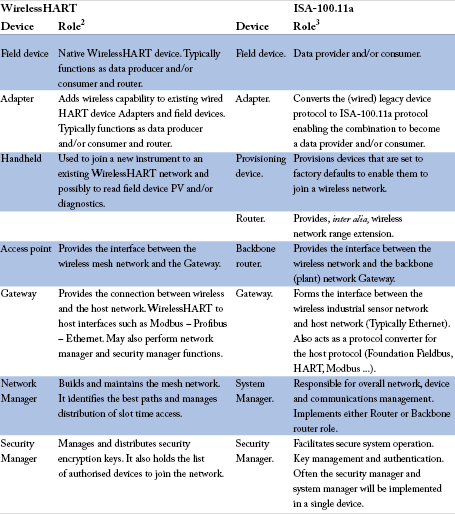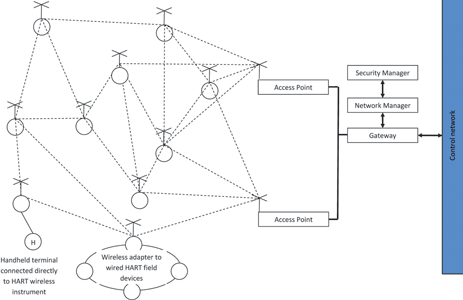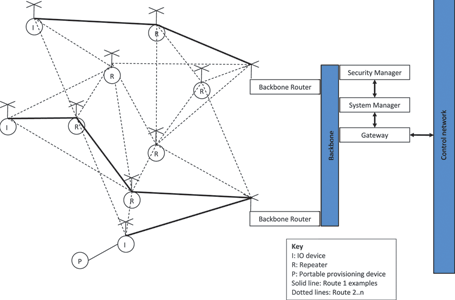
In the years leading up to the end of the 2001 – 2010 decade end-users who were considering the adoption of industrial wireless technology for instrument signals were faced with two options, each gathering their own proponents, and each coming from a different perspective: these were (in the blue corner) the WirelessHART (IEC/PAS 62591) team and (in the red corner) the ISA100 (ISA-100.11a) team. In the last three years a third player, WIA-PA (IEC/PAS 62601), originating from China, has joined the fray.
Various commentators have likened the battle of the industrial wireless standards to that between VHS and Betamax in the dim and distant past. And for all the hot air that was generated, both those technologies got overtaken by rotating optical storage solutions which themselves may soon disappear.
So should you wait to adopt wireless or should you make an informed decision now and live with that?
Convergence drivers
Large end-users have put pressure on the IEC/PAS 62591 and ISA100 groupings to provide a convergence route map. There are sound commercial and operational reasons for such convergence and the advantages of such convergence appear to be mutually beneficial for both end-users and vendors.
From an end-user perspective the benefits include:
* A wider choice of field instrumentation since the vendor pool becomes the totality of IEC/PAS 62591 and ISA100 manufacturers.
* A more competitive supply side environment, for the same reason.
* Lower on-site maintenance spares holdings because (large) end-users would not need to hold both IEC/PAS 62591 and ISA100 field instrument spares.
* Reduced investment in training since they would not need to train on both systems.
* Reduced investment in infrastructure since they would not need to hold, for instance, handheld devices for provisioning wireless devices.
* Overall reduced lifecycle costs.
From a vendor perspective the benefits include:
* Faster global adoption of wireless technology since end-users would not be stuck in the choice dilemma. In an October 2010 report1 from ARC Advisory Group the potential revenue increase resulting from faster adoption was postulated at up to hundreds of millions of US Dollars.
* A larger potential market since they would be able to market to all potential instrument purchasers.
Convergence status
Both ISA100 (Working group WG12) and NAMUR have active programs in place to determine roadmaps to convergence and there is a working communication channel between NAMUR and ISA on the subject. The ISA100.12 convergence subcommittee initiated a Convergence User Requirements Team that submitted reports both to ISA and to NAMUR in 2010. NAMUR produced report NE133: Wireless Sensor Networks: Requirements for convergence of existing standards, addressing the issue.
In 2010 NAMUR also entered into discussion with WIA-PA with a view to that standard also being included in convergence discussions. Can 1 340 000 000 (that is approximately 20% of the world’s population) ever really be wrong?
What are the differences?
Perhaps the starting point to answering this question is to look at where WirelessHART and ISA-100.11a originated.
In the case of WirelessHART, at a simplistic level, it was developed as a wireless extension to the existing wired HART communications protocol. That has some impact on its applicability, design and even on the level of security incorporated into the standard.
In the case of ISA-100.11a it evolved as probably the most obvious member of the ISA100 standards family. That means that it was envisaged as a part of a much greater whole than WirelessHART. For instance, ISA100 also embraces the use of wireless for real-time field-to-business systems for interfacing work order systems, Control LAN, business LAN and voice. It was also in its infancy as the greater need for security for plant control systems was rearing its ugly head and while the world was busy running out of IPv4 addresses. That means that perhaps more emphasis was put on embedding security into the standard and that IPv6 addressing is embraced. Unlike WirelessHART, ISA-100.11a supports the concept of sensor network subnets, offering greater expansion potential.
A detailed technical comparison of WirelessHART and ISA-100.11a performed as part of Gengyun Wang’s MSc thesis4 concludes that “ISA100.11a offers a vaster coverage and broader view of process automation solutions” and cites aspects such as latency minimisation, management of QoS, security and object orientation.
Table 1 shows typical devices and device roles for each of WirelessHART and
ISA-100.11a. Unfortunately, with the final draft of WIA-PA only released in October 2011, there is insufficient information in the public domain to include comparative details for WIA-PA.

Figures 1 and 2 respectively show typical system architectures for WirelessHART and ISA-100.11a.


The terminology and purpose of devices differs a little between the standards, and in many cases a single device may perform multiple roles (for instance a WirelessHART Gateway may actually embody Adapter, Gateway, Security Manager and Network Manager), so Table 1 and Figures 1 and 2 should be considered as comparative guidelines only. Readers should refer back to the standards themselves for a deeper understanding of these roles.
Channel hopping
One of the challenges that secure industrial wireless communications has to address is that of ever-increasing traffic on the unrestricted 2,40 GHz ISM band on which all of these industrial wireless standards are built. This same band is shared by Zigbee, Wi-Fi, Bluetooth, smartphones, wireless telephone handsets, security cameras, baby monitors, remote controls and a plethora of other devices. Simply put: the airwaves are crowded in this band.
At the same time there is the growing concern about eavesdropping on industrial wireless for the purpose of sabotage.
Over and above the use of 128-bit security keys, which help to foil eavesdropping attempts, secure industrial wireless uses channel hopping, slow channel hopping, channel whitelisting and blacklisting. These channel hopping communication strategies are handled by the Network Manager or System Manager and there are some significant differences in the complexity and configurability of channel hopping strategies between WirelessHART and ISA-100.11a.
Take the plunge
At the start of this article I posed the question: “So should you wait to adopt wireless or should you make an informed decision now and live with that?”
Here is my take on it. If I had a plant where it made economic sense (based on total lifecycle cost) to install a wireless sensor network for some field instruments – perhaps for location reasons (say an effluent plant some distance away from the main operations), or for environmental reasons (signal cabling being damaged by heat/vapours/corrosion ...) or by virtue of moving parts (where sliding contacts, rotary kilns, catenaries and the like can be eliminated) – then I would take the plunge.
Which technology would I plump for? If the majority of my wired field instruments were already HART devices I would stick with HART. Otherwise I would go the ISA-100.11a route.
Would I bet on complete convergence and interoperability between WirelessHART and ISA-100.11a field instruments and infrastructure in the next five years? No.
Would my investment be maintainable and the technology selected supportable for 10 years? Almost certainly.
So what are you waiting for?
References
1. ARC Consulting; ARC Brief: ISA100 and Wireless Standards Convergence; http://www.arcweb.com
2. HART Communication Foundation; The Components of WirelessHART technology; http://tinyurl.com/5rm2zmv
3. International Society of Automation; ISA-100.11a-2009: Wireless Systems for Industrial Automation: Process control and related applications; http://tinyurl.com/6dg3jas
4. Chalmers University Of Technology; Report No. EX036/2011: Comparison and Evaluation of Industrial Wireless Sensor Network Standards ISA100.11a and WirelessHART; http://tinyurl.com/6bo6dnc
Sources and resources
HART Communication Foundation; General information on HART and WirelessHART; http://www.hartcomm.org
International Electrotechnical Commission; IEC 62601: Final Draft: Edition 1.0 2011-08: Industrial Communication Networks – Fieldbus Specifications – WIA-PA Communication Network and Communication Profile; http://tinyurl.com/66ht4p8
International Society of Automation; ISA100, Wireless Systems for Automation; http://www.isa.org/ISA100
ISA100 Wireless Compliance Institute; Background, registered devices, FAQ; http://www.isa100wci.org
About the author

Andrew Ashton has electrical, mechanical and business qualifications and has been active in automation and process control since the early 1980s. Since 1991 he has headed up a company that has developed formulation management systems for the food, pharmaceutical and chemical manufacturing industries and manufacturing solutions involving the integration of various communication technologies and databases. Developed systems address issues around traceability, systems integration, manufacturing efficiency and effectiveness. Andrew is a contributing editor for SA Instrumentation and Control.
| Tel: | +27 11 543 5800 |
| Email: | [email protected] |
| www: | www.technews.co.za |
| Articles: | More information and articles about Technews Publishing (SA Instrumentation & Control) |

© Technews Publishing (Pty) Ltd | All Rights Reserved